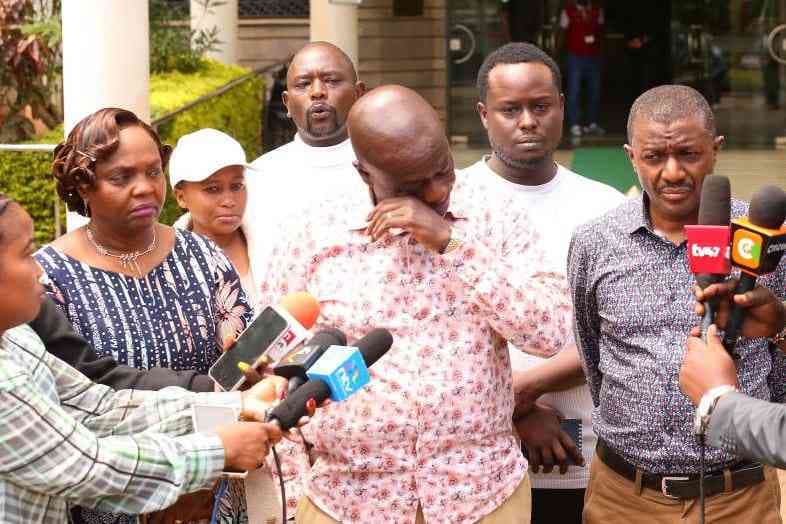We're loading the full news article for you. This includes the article content, images, author information, and related articles.
Deputy President Rigathi Gachagua's ouster was sealed in a series of high-stakes meetings where political debts were called in and alliances shattered. For Kenya, it signals a seismic shift in the country's power dynamics ahead of the 2027 elections.

NAIROBI – In a move that has irrevocably altered Kenya's political landscape, Deputy President Rigathi Gachagua was impeached by the Senate late Wednesday, October 29, 2025, marking the culmination of a dramatic and rapid fallout with President William Ruto. The final vote, which saw a decisive majority of senators uphold the charges brought by the National Assembly, was the final act in a political drama fueled by ambition, regional interests, and a series of clandestine meetings that began long before the impeachment motion was formally tabled.
The grounds for Gachagua's removal were officially cited as gross violation of the Constitution, incitement, and undermining the authority of the President. However, investigations by Streamline News reveal a complex web of intrigues, betrayals, and power plays that sealed his fate. The schism between the President and his deputy, once a formidable political duo, became a public spectacle by late 2024, with Gachagua openly accusing the President's allies of sidelining him and sabotaging his work.
Multiple sources within the ruling United Democratic Alliance (UDA) and the opposition, speaking on condition of anonymity, have detailed a sequence of secret meetings where the strategy to oust Gachagua was meticulously crafted. The first significant caucus reportedly took place in early September 2025 at a private residence in Karen, Nairobi. In attendance were key State House strategists, influential UDA legislators, and, surprisingly, senior figures from the Azimio la Umoja coalition.
"The deal was simple: secure opposition support for the impeachment in exchange for a commitment to a more inclusive government and key committee leadership roles in Parliament," one senior UDA MP disclosed. This meeting was the genesis of the unlikely cross-party alliance that would prove fatal to Gachagua's political survival. President Ruto's allies successfully argued that Gachagua's increasingly vocal mobilisation of the Mt. Kenya region, centered on a narrative of betrayal and regional marginalisation, posed a direct threat to national unity and the stability of the Kenya Kwanza administration.
A second critical set of meetings occurred in the last week of September 2025 at a hotel on the outskirts of Nanyuki. Here, State House emissaries met with a divided cohort of Mt. Kenya leaders. The objective was to peel away Gachagua's support from his own backyard. Promises of development projects, cabinet appointments, and a future stake in the government were laid on the table. This strategy proved partially successful, creating a visible split among Mt. Kenya MPs. While some remained fiercely loyal to the Deputy President, a significant number, including once-vocal supporters, either went silent or openly shifted their allegiance to the President's camp, a move that was critical in legitimizing the impeachment push.
The constitutional process for impeachment requires a motion to be supported by at least a third of the 349 members of the National Assembly (117 MPs) to be introduced. The motion against Gachagua, sponsored by a UDA legislator, surpassed this threshold with ease, backed by a coalition of UDA loyalists and opposition MPs. Once the motion passed the National Assembly with a two-thirds majority on October 8, 2025, the stage was set for the final act in the Senate.
The Senate trial, which began on October 27, 2025, saw Gachagua's legal team argue that the impeachment was a politically motivated witch-hunt. They contended that the charges were flimsy and lacked the constitutional threshold for removing a deputy president from office. However, the political momentum was unstoppable. The Senate, sitting as the final arbiter, voted to uphold three of the five charges, sealing Gachagua's fate.
The impeachment of Rigathi Gachagua is a watershed moment in Kenyan politics. It not only marks the first time a Deputy President has been removed from office under the 2010 Constitution but also signals a fundamental realignment of political forces. The fallout has left the vote-rich Mt. Kenya region politically fractured, creating a vacuum that various leaders are now scrambling to fill. For President Ruto, the move consolidates his power but also carries significant risks. Having jettisoned the man who helped rally the Mt. Kenya vote bloc, he now faces the challenge of retaining the region's support while navigating a new political landscape shaped by his pact with the opposition. As Kenya looks towards 2027, the aftershocks of this impeachment will continue to define the nation's political trajectory.
Keep the conversation in one place—threads here stay linked to the story and in the forums.
Other hot threads
E-sports and Gaming Community in Kenya
Active 7 months ago
Popular Recreational Activities Across Counties
Active 7 months ago
The Role of Technology in Modern Agriculture (AgriTech)
Active 7 months ago
Investing in Youth Sports Development Programs
Active 7 months ago